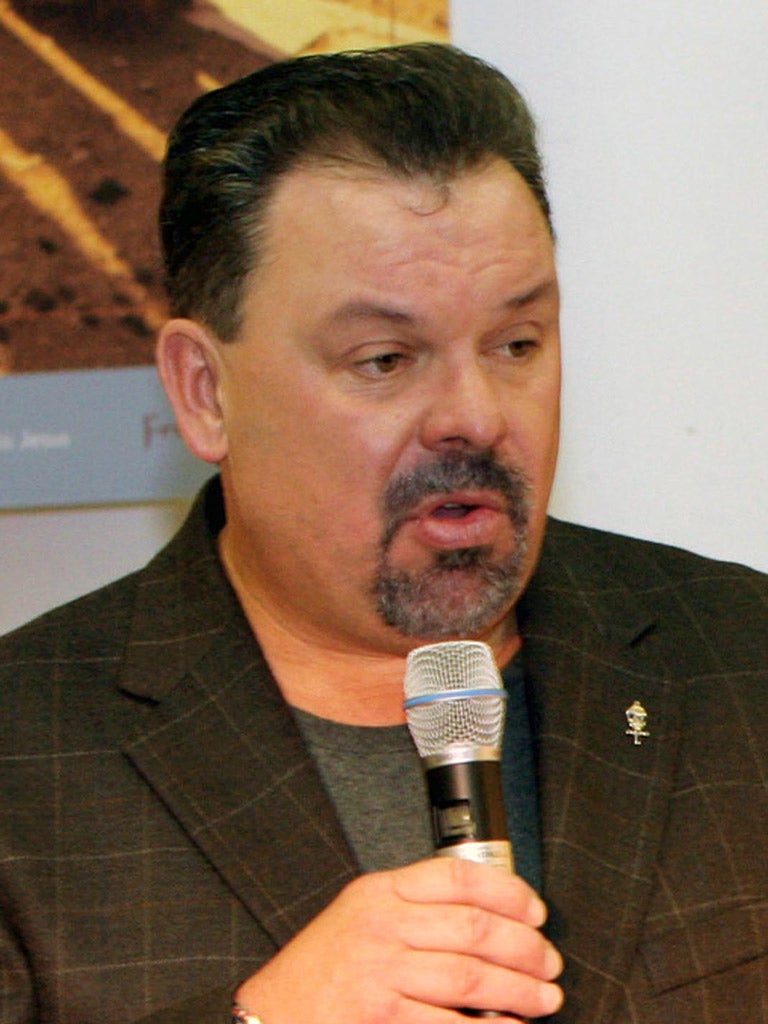Thomas Kinkade: US artist whose populist works sold by the million

Thomas Kinkade was America's most prolific and successful popular artist of the last 100 years. Calling himself the "Painter of Light", a term he trademarked, he claimed to have an example of his work in one in 20 of the country's homes. Kinkade turned the production of his sentimentally themed paintings, prints and posters, mugs and calendars into an enterprise, the Media Arts Group, which made him over $50m between 1997 and 2005. Explaining his motivation, he said, "There's been million-seller books and million-seller CDs. But there hasn't been, until now, million-seller art. We have found a way to bring to millions of people an art that they can understand."
Kinkade was born in Placerville, California in 1958. In an interview with Larry King, he recalled the advice given to him in childhood: "When I was a young boy, my mother told me, 'Your talents are God's gifts to you, and what you do with those talents are your gift to God'."
In 1980, after studying at Pasadena's Art Center College of Design, he embarked on a road trip across America with his friend James Gurney. His public artistic career began with the publication two years later of The Artist's Guide to Sketching, co-authored with Gurney, which became a bestseller. The following year he worked at the Ralph Bakshi Studios on scenic backgrounds for the production of the animated feature film Fire and Ice.
Kinkade began by producing original oil paintings, but his breakthrough came around 1984, when he and his wife, Nanette, devised a plan to sell reproductions of his works via nationwide sales campaigns. With publicity via TV and magazine adverts, he would promote works through launch parties at regional galleries, marketing the pictures as a lifestyle choice and investment opportunity.
In recent years he had trained artists as "Master Highlighters", who would take prints of his work on tour and add layers of oil paint at public gallery events. In this way, he could extend the reach of his name and increase availability of the pictures, while maintaining an element of hand-finishing. On the overall theme of his body of work, he said: "For many millions, my art provides an escape from the pressures of contemporary life and a gentle affirmation of such foundational values as home, family, faith and simpler ways of living."
Many of the pictures would begin through painting directly from nature, a subject which was explored in The Artist in Nature: Thomas Kinkade and the Plein Air Movement (2002) by M Stephen Dougherty, with an introduction by Kinkade. His illumination technique was inspired by the 19th century German-American artist Albert Bierstadt.
The essayist Joan Didion wrote in her 2003 memoir: "This 'Kinkade Glow' could be seen as derived in spirit from the 'lustrous, pearly mist' that Mark Twain had derided in the Bierstadt paintings, and, the level of execution to one side, there are certain unsettling similarities between the two painters." She goes on to suggest that the light effect used in his depiction of buildings was "...sinister, suggestive of a trap designed to attract Hansel and Gretel. Every window was lit, to lurid effect, as if the interior of the structure might be on fire."
Others spoke more positively of the luminosity of his paintings and of his personality. "He had a rare ability to exude a sense of warmth, a transcendent light," said Robert Goodwin, who wrote the book Points of Light: A Celebration of the American Spirit of Giving (2006) with Kinkade. Jeffrey Vallance, who hosted a show of Kinkade's work in Santa Ana, California, also countered the critics. "In their minds," he said, "he represented the lowest type of art... He was different from other artists. You kind of felt like he was giving people what they wanted."
The life of the Painter of Light had some darker periods. In 2003 his company was sued by gallery owners Karen Hazlewood and Jeff Spinello, who claimed that Kinkade overestimated the potential business benefits of selling his artworks. Three years later they were awarded over $2.8m in damages and legal fees. One of his companies filed for bankruptcy in 2010. Kinkade was prosecuted for drink-driving a few months later.
He received a number of awards, including several Artist of the Year prizes from the National Association of Limited Edition Dealers. His charitable work included being a spokesperson for the Make-A-Wish Foundation and collaborating with Art for Children.
Kinkade said of his life and work: "I'm a warrior for light... With whatever talent and resources I have, I'm trying to bring light to penetrate the darkness many people feel."
Marcus Williamson
Thomas Kinkade, artist: born Placerville, California 19 January 1958; married 1982 Nanette (four daughters); died Los Gatos, California 6 April 2012.
Join our commenting forum
Join thought-provoking conversations, follow other Independent readers and see their replies
Comments
Bookmark popover
Removed from bookmarks